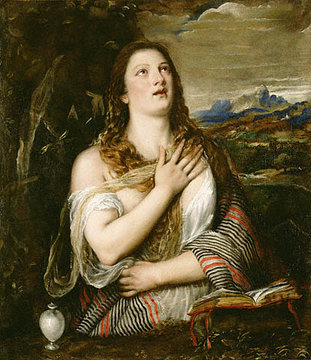Titian or properly known as Tiziano Vecelli or Tiziano Vecellio was an Italian painter known for his versatilestyle in painting portraits, landscapes, and religious themes. Titian was considered to be the most vital student of the 16th century Venetian school as he was also raised in Pieve di Cadore, close to Belluno in Veneto in the Republic of Venice. Titian was called after his birthplace da Cadore and later on was designated to Il Divino.
Titian, though born in Venice, was indirectly inclined to the Venetian lagoons and Adriatics. He was able to broaden his sense in a different way through observation and perception. During the time Venice was caught up in war, Titian was able to record in a painting the victory of Venice during the battle of Cadore. Since then, the exemplary portrait paintings of Titian lived on.
Titian was recognized as “The Sun Amidst Small Stars” which was taken from the line of Dante’s Paradiso, his painting technique was focused in the application of colors and its use that would at the same time emanate a profound influence not just during the Renaissance era but also to the future eras of Western Art. In the long run of Titian’s life, his manner of painting has changed but he never failed to emphasize his subject through the use of colors. In his more matured works, his paintings were not anymore that vivid and luminous but his loose brushwork accentuated the intricate elements of his polychromatic methods that was never topped down in the history of Western Art. During this period, Titian was gaining mastery and maturity in his pieces. He moved forward from his already renowned Giorgionesque style for a more monumental and complex themes.
His particular portrait painting, the Penitent of Mary Magdalene, was just one of his religious subjects. In this masterpiece, Mary Magdalene is showing a deep melancholic emotion with teary eyes looking at the heavens, clearly manifesting spiritual devotion. During the times when Catholic religion was bombarded with challenges by the followers of the Protestant reformation, this painting actually had seven versions. Each version went through X-ray examinations and the researchers found out that Titian has made several changes in the composition but the idea or the theme of the subject is still intact. The best version of this painting can be found in Hermitage and it is considered unique for it is the only version that displays Magdalene’s Bible that lies on a cloth rather than a skull – which has a symbolic meaning of death. Titian’s idea of Mary Magdalene connotes a profound emotion that would instantly affect those who would look at the painting; the image of Mary Magdalene is poignant that induces pity over desire.
The painting’s focal theme is on religious subject but a strong and erotic display of emotion is also depicted in this piece. Sunk down in a gesture of sacred penitence, her breasts are partly covered in a provocative manner. The portrait is more than extraordinary; the way he manipulated the colors brought out the deep sense of the whole painting. The way the light is reflected just made it look more brilliant, bringing silhouette on Magdalene’s breast covered with cloth.
Since then, Penitent of Mary Magdalene painting was considered to be one of the most influential as it conveys a religious message that somehow affects the viewer’s opinion on spiritual devotion. Its intricate details that are perfectly associated with colors will everlastingly serve as a piece of resemblance on how Catholicism has affected the religious view of an individual. The magnificent effect of this portrait painting will certainly give vital lessons to future painters who have the same desire as with Titian.
Author: Shyxter
